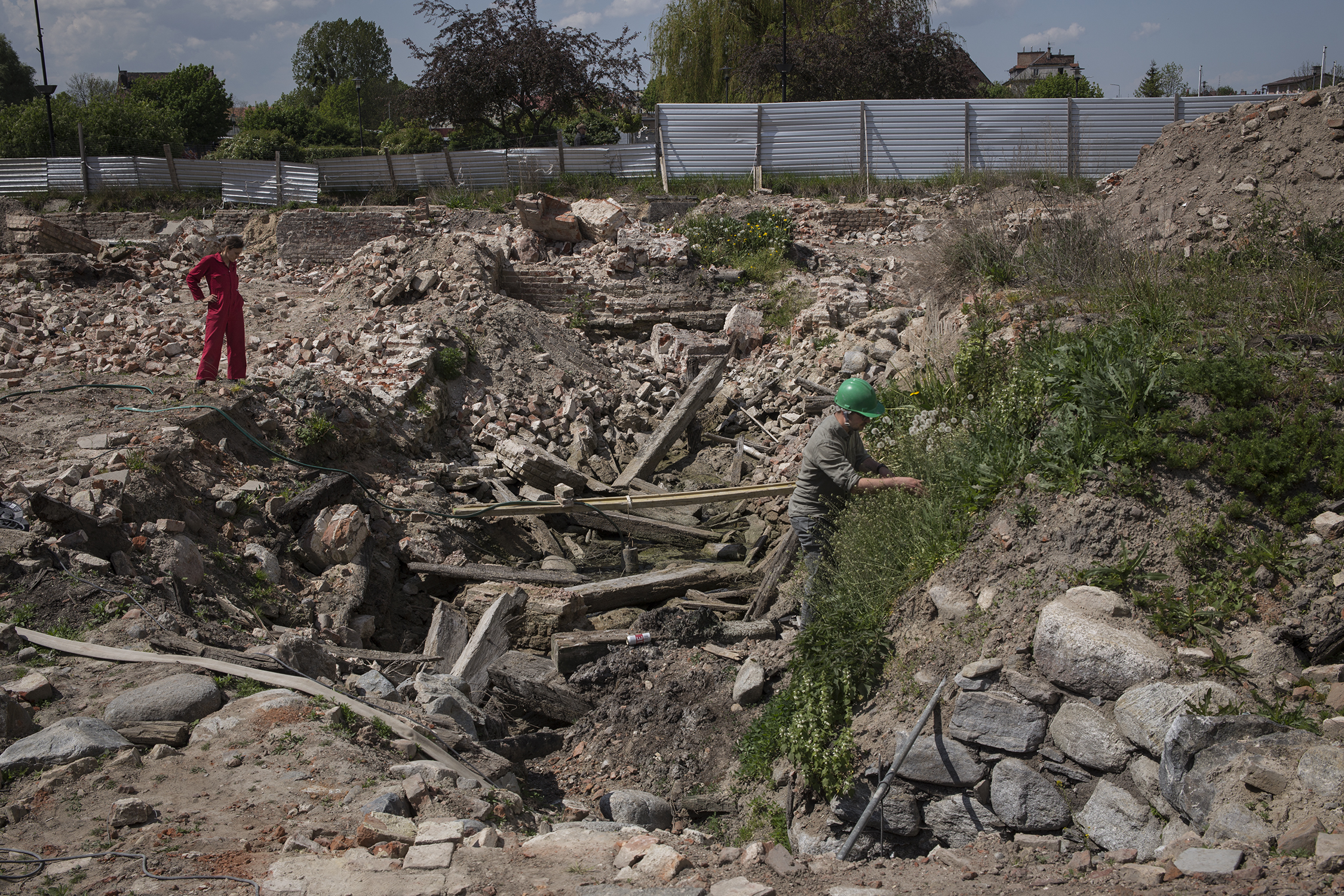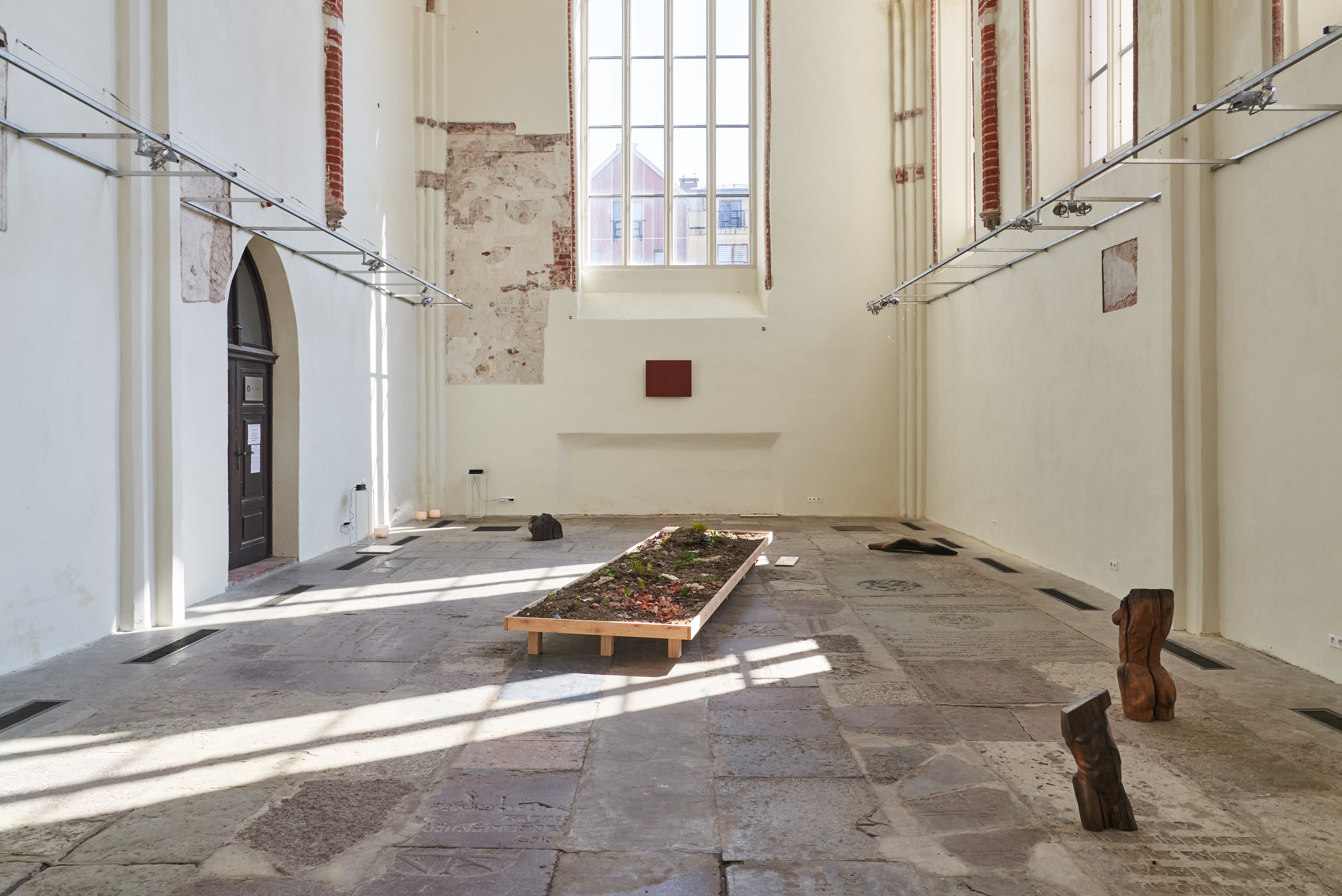EL
Micro-preserve
2023, gardening-art
intervention
Coauthor: Kasper Jakubowski
The work draws attention to an overlooked theme in the course of the post-war revival, which is the expansion and rebirth of ruderal vegetation (from the Latin rudus,
i.e. rubble)
on the ruins of a city
. A section of the street in Elbląg (pre-war German Elbing) that has been excluded from use, gradually
overgrowing with spontaneous nature, was proclaimed as a natural preserve. This action highlights the problematic
"unplanned" status of seemingly
unorganized
nature and its right to exist in the city. The work also raises questions about the possibility of maintaining some continuity of the city's identity in the face of its wartime and social transformations.
![]()




Elbing was a German city that was devastated in ninety-eight percent in 1945. There was also a complete replacement of the social fabric, as the city became Polish Elbląg. For many years there was a debate about how to rebuild the city, until the 1990s, when an new urban planning concept called "retroversion" won. It assumed a free reinterpretation of the architecture while preserving the medieval street grid and the size of the buildings. However the role of plants and other more-then human beings were never noticed in this transformation process.
The EL micro-preserve was created in a space once separated by a fence to protect passersby from falling debris from the historic wall. The space provided a small shelter for the spontaneous vegetation that developed on a much larger scale in the disordered spaces of Elblag from the end of war until the restoration of the Old Town began in the 90 (continuing untill now).There are very few places where spontaneous vegetation can develop without limitations. Usually those spaces in people's understanding have no important function and thus remain to them in a sense invisible. However, it turns out that species that have grown up on rubble and similar wastelands (the so-called fourth nature) represent hope in the face of climate catastrophe. Thanks to their ability to withstand large temperature fluctuations, they can grow on piles of rubble, concrete and places heavily transformed by man, they can initiate the Nature's reintroduction process.
The created micro-preserve is accompanied by an installation inside the gallery. The work has the character of a gardening intervention and will evolve over the duration of the exhibition,
and also after it closes. The plants visible on the table were rescued and moved from a nearby construction site, where new buildings are being built on the plan of the historic, ruined old town. After the exhibition is completed, they will be transplanted to nearby lawns and flower beds.
The soil was obtained from the construction site as part of a new development on Studzienna Street in the Old Town. It was excavated during the uncovering of historic foundations and contains a collection of seeds, which botanists call a "soil seed bank" - a natural history of Elblag. Mixed in it the remains of plant diasporas from different eras - the seeds from pre-war and post-war periods of historical periods, as well as contemporary ones. "Living installation" relies on the fact that under the influence of favorable conditions for growth, the seeds hidden in the rubble begin to germinate. Earth rubble hides a remarkable potential for renaturalization.
Exhibition:
Retrowersje - sobie mieszkanie, miastu starówkę. Galeria EL, Elbląg, 2023 (group exhibition)
Curatorial team: Zuzanna Mielczarek, Maciej Olewniczak, Emilia Orzechowska, Mateusz Włodarek
Photography: Kuba Rodziewicz
More: https://niaiu.pl/dzialalnosc/retrowersje/
